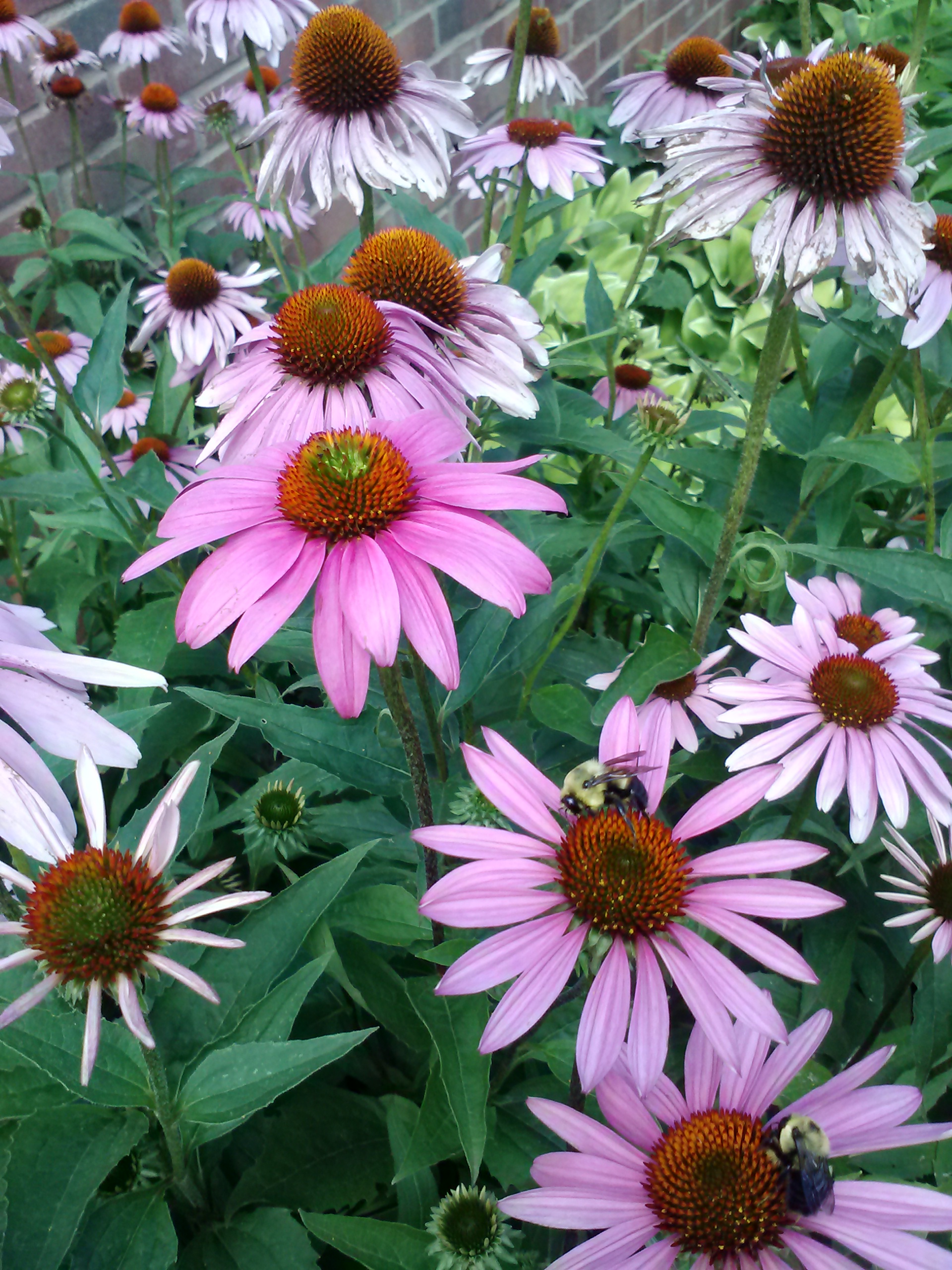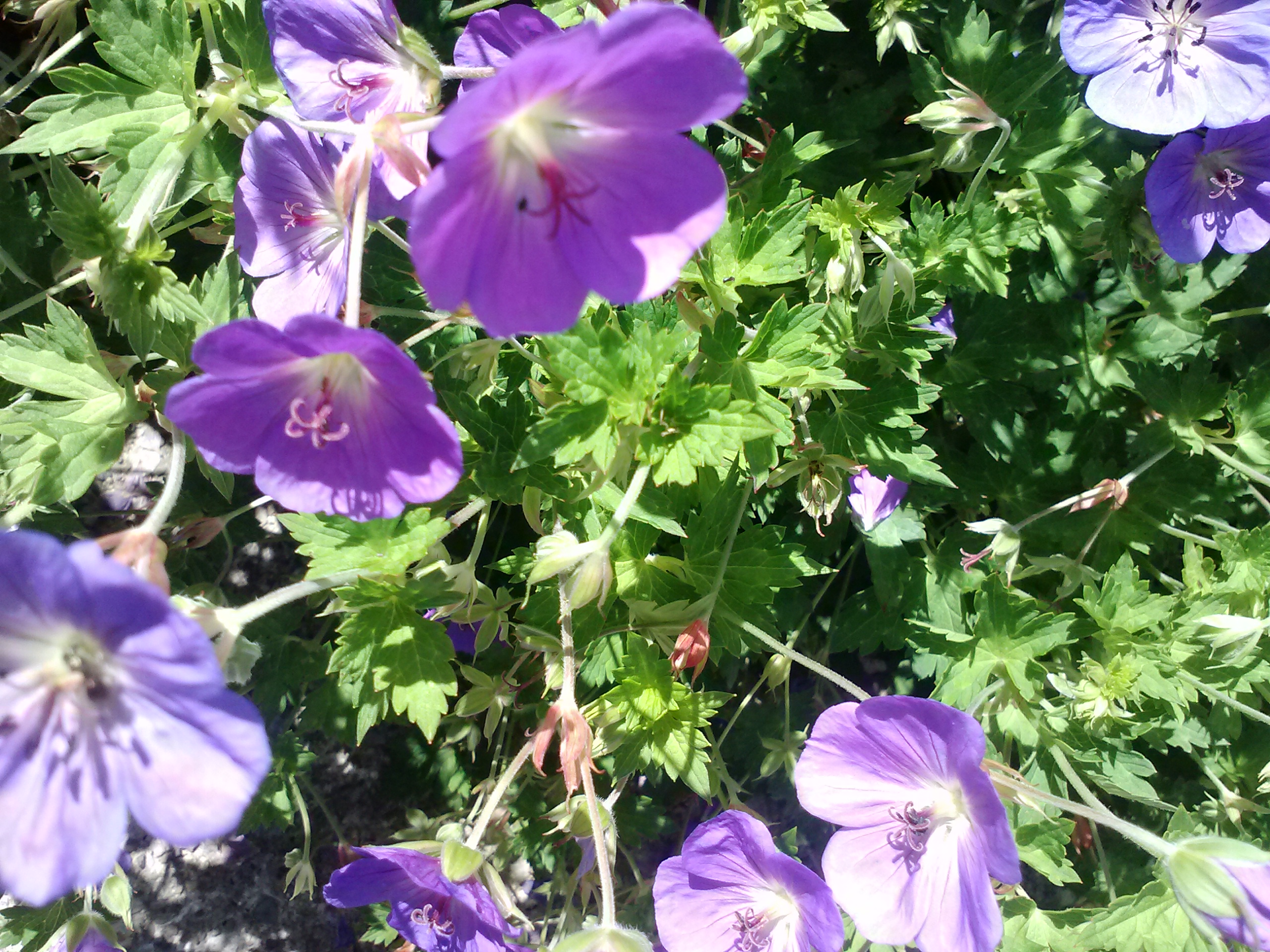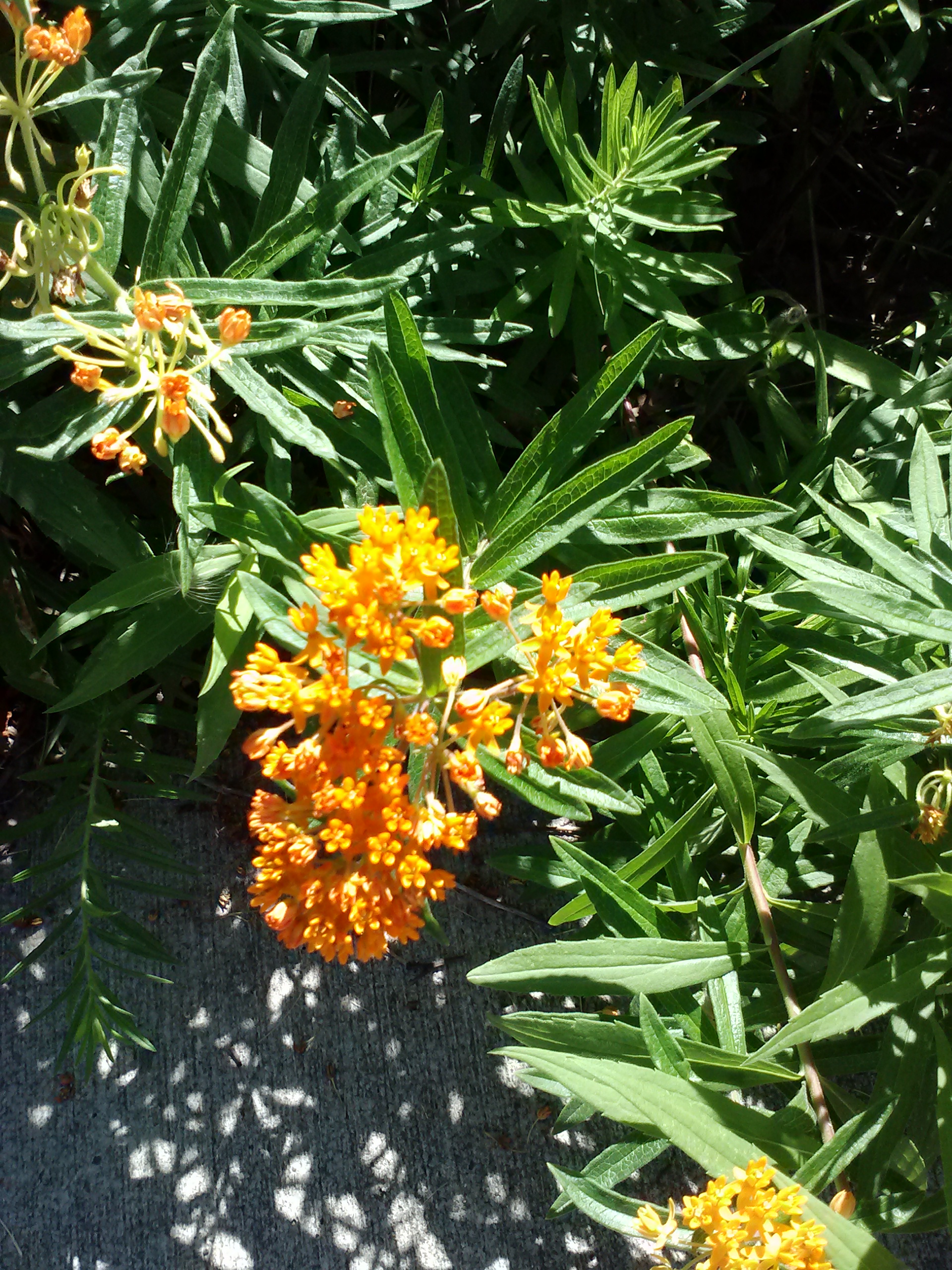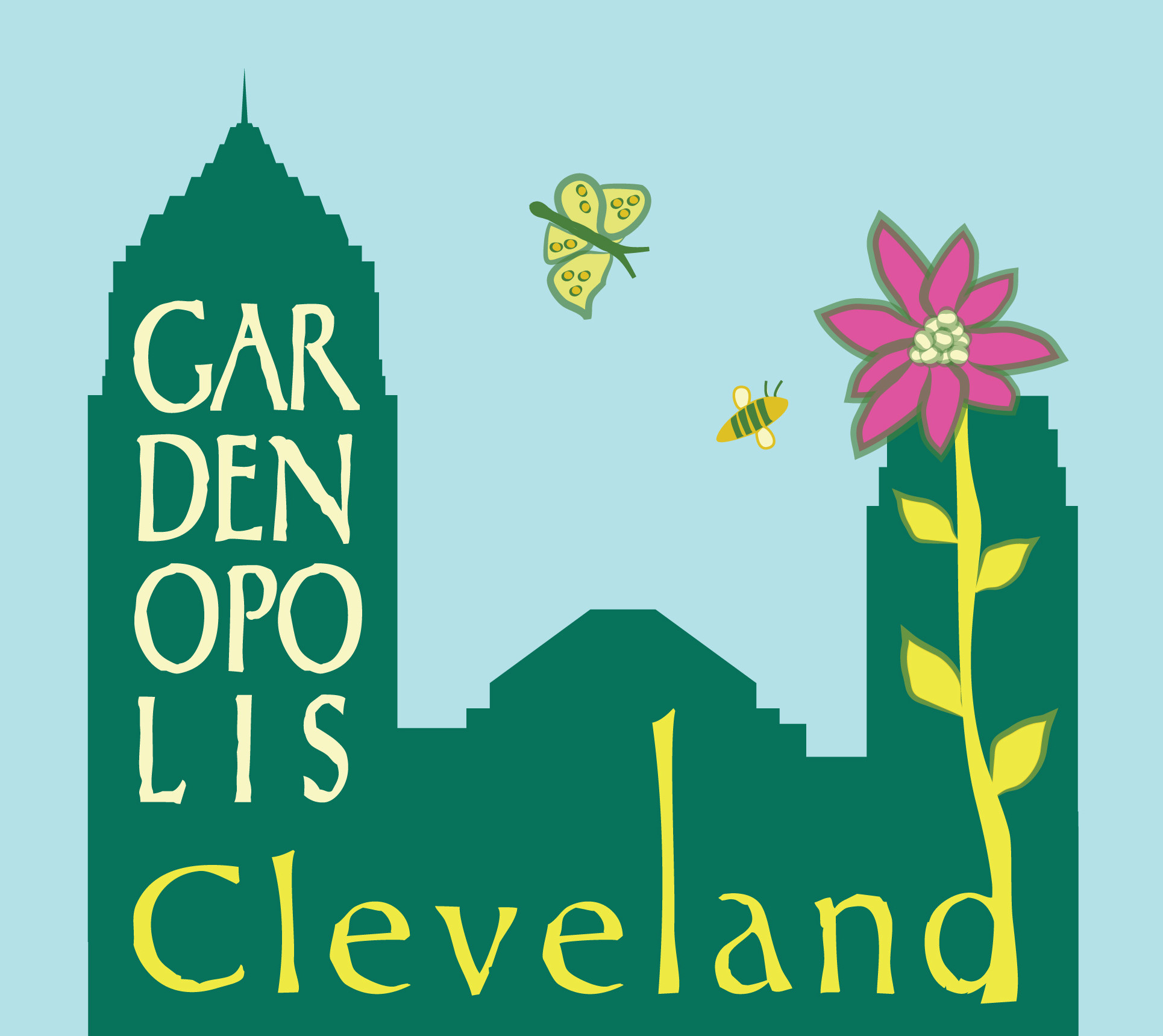Catherine Feldman and Elsa Johnson
Gardenopolis Vision: Pollinator Pockets blooming in every yard throughout the Cleveland area. Butterflies, bees, wasps, birds and bats feasting and flying from pocket to pocket. Pollinator populations proliferate. We are doing our part.
Our Plan: To provide a service by planting Pollinator Pockets in the Cleveland area .
Our Action: We have planted seven experimental Pollinator Pockets in Shaker Heights and Cleveland Heights. As you may recall from our previous article on this venture last fall we prepared the gardens for planting using the lasagna mulch method, layers of newspaper, compost, manure, straw and wood chips. This spring we designed and planted individualized selections of native pollinator attracting plants.
In general, our criteria were as follows:
- Grows well in Cleveland
- Close to species—more likely to attract native pollinators and to bloom at the time that native pollinators require
- Sequence of bloom for a long period of time from summer into fall
- Native because more likely to survive
- Drought resistant—native plants tend to be
- Deer resistant: although deer may taste something they haven’t seen before they are not likely to eat the plants as chosen
- Long bloom—individually (weeks vs. just days)
- Beauty-good color combinations
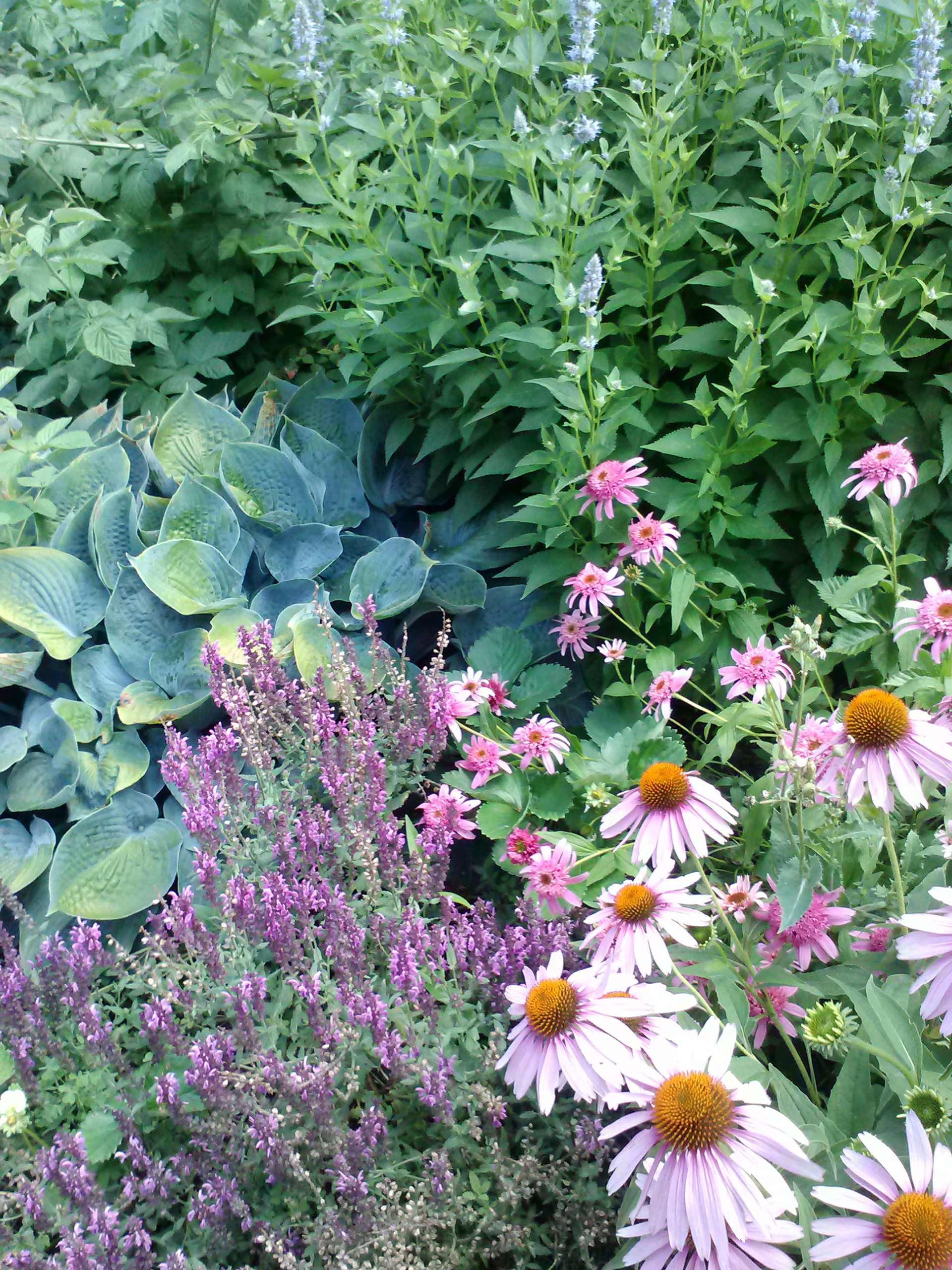
In particular, each pocket we planted was different (size, sun or shade, location in relation to the house) so each bed was individually designed by Gardenopolis Cleveland editor, Elsa Johnson.
There are many lists out there of recommended pollinator plants. This list consists of the ones that met our criteria and that we were able to obtain in plug size (more economical):
- Agastache: long bloom period-mid-summer into fall; bees LOVE it
- Anenome: late season bloom-spreads nicely (but can be invasive)
- Asclepias: two seasons of importance—in bloom for bees and butterflies and as food source for monarchs; will self-sow for monarchs
- Echinacea: blooms over a long period of time-midsummer into fall; birds like seeds
- Chelone: late bloomer
- Aster: late season bloomer
- Eupatorium: late season bloomer; easy to grow
- Lobelia: late season bloom—attracts humming birds as well as insects
- Geranium: Rozanne or Azure Rush—these varieties bloom all summer and into fall
- Meehania: groundcover in the mint family; early bloomer
- Rudbeckia: ‘Henry Eilers’ has a long bloom time from mid-summer into fall. We also like ‘Viettes Little Suzy’ (shorter)
- Salvias: blooms early and into summer; reblooms and easy to grow if you cut back after blooming
- Scutellaria: a native mint good for semi-shade; spreads
- Solidago: long season of bloom from late summer into fall. An important late season pollinator
Geranium Rozanne
Aesclepias tuberosa
Next Steps: If you are inspired by this idea and want to plant your own Pocket, go for it! Here are some links for more information:
- http://www.xerces.org/pollinators-great-lakes-region/
- http://www.dallasnews.com/lifestyles/home-and-gardening/headlines/20150826-do-your-part-plant-a-pollinator-pocket.ece
- http://www.birdsandblooms.com/gardening/attracting-butterflies/
- http://web.extension.illinois.edu/cfiv/pollinators/
You may even wish to take a course:
Or, read a book:
Attracting Native Pollinators by Eric Mader, Mace Vaughn, and Matthew Shepherd of the Xerces Society is a classic.
Or, on the other hand, you may prefer to have us plant one for you. If so, please contact Catherine Feldman at gardenopoliscle@gmail.com.
We end by loosely quoting Denise Ellsworth, “Fall victim to plant lust, but, before you fall, take a step back and watch how many pollinators it attracts.”
When you see our sign, look for one of our Pollinator Pockets nearby. We will be keeping you posted as to their progress.
